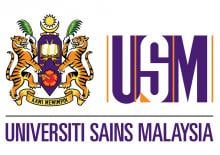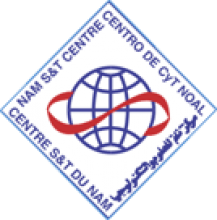Science
News

25 Jan 2007
Summaries of newsworthy papers from Nature include Cancer cleared by p53 restoration, Algorithm seeks out smell, Essays: Putting the pieces together, Quantum physics: To bunch or not to bunch and Fight-watching fish fathom hierarchies

24 Jan 2007
IBN’s technology spells hope for cancer patients who suffer from painful side-effects of chemotherapy

24 Jan 2007
IBN has pioneered methods to enable these nanocrystals to be used as powerful tools in bio-imaging and drug targeting

24 Jan 2007
Hydrogels developed by IBN scientists can potentially make chemotherapy and tissue regeneration more convenient and safe

24 Jan 2007
Scientists at IBN have produced artificial fibers that act as ‘templates’ to grow new tissue

24 Jan 2007
A breakthrough technology developed at IBN can potentially lead to more effective treatment methods for cancers

22 Jan 2007
The December issue of Keio Journal of Medicine is now available online.

22 Jan 2007
Each day in the United States, as many as 87 to 103 babies are born with alcohol related defects; annually, an estimated $75 million to $9.7 billion is spent on the care of these infants. The consumption of alcohol during pregnancy places the fetus at risk of developing FASD

21 Jan 2007
Summaries of newsworthy papers include A synchrotron for neutral molecules, Nanocrystals used as dopants, Reinventing the wheel, For goodness sake, Gambling on consciousness, A tunnel that transfers lipids

18 Jan 2007
TWAS, the academy of sciences for the developing world, is seeking nominations for its two prizes schemes, the TWAS Prizes and the Trieste Science Prize, both of which are aimed at honouring scientists living and working in the developing countries. The closing date for nominations for both awards is 31 March.

17 Jan 2007
The influenza virus that killed about 50 million people worldwide around 90 years ago is also lethal in nonhuman primates, a study in this week's Nature reports. The results confirm that it was the virulence, associated with the virus itself, that made it so efficient in claiming young adult lives.

17 Jan 2007
An unexpected link has been spotted between the Asian monsoon and a recently discovered oscillating pattern of sea surface temperatures in the Indian Ocean. Other newsworthy papers from Nature include Health studies - new for old and Magnetic make-over

17 Jan 2007
Nature Publishing Group (NPG), publisher of the world's most influential science journals, today announced the launch of Nature Education, a new venture to develop innovative educational resources and tools for science students and their professors.

14 Jan 2007
Summaries of newsworthy papers from Nature and the Nature Research Journals that will be published online on 14 January 2007. Sizing up stem cells, Maintaining immune regulation, and Getting things into cells with the aid of small molecules.

12 Jan 2007
Nadia El-Awady, president of ASJA, explained that among the objectives of the new association will be the popularization of science among the general Arab public and the creation of a new generation of Arab youth that understands the role of science in the region’s development.

11 Jan 2007
A comparative study of fine and coarse ambient aerosol samples between an industrial and commercial site and a less polluted site shows the significant effect of industrialization and commercialization on air quality in Metro Manila.

11 Jan 2007
The accurate forecast of a cyclone’s track and intensity is of great importance to lessen the damage it may cause. Not all countries are financially capable to use global circulation models (GCM) in forecasting. Thus, an economical solution for improving the resolution of cyclone forecast is to nest a regional climate model within a global model.

11 Jan 2007
Holograms have so far been considered as a contraption of the future. However, many studies today have made holography a reality. A potential holographic light source is the hydrogen Raman Shifter, a multi-wavelength pulsed coherent light source that is both compact and inexpensive.

10 Jan 2007
Scientists wishing to store spent nuclear fuels inside specially designed ceramics may need to think again. The synthetic materials may not be as durable as was previously thought. Researchers use a new approach to determine nitrogen fixation rates in the world's oceans - with surprising results.

10 Jan 2007
Toluene, a commonly abused toxic compound, is shown to stimulate dopamine release in specific regions of the rat brain known as drug reward pathways, according to research published online in Neuropsychopharmacology this week.

07 Jan 2007
In a preliminary field survey to assess bat diversity and ecology in Malaysia, a team of Malaysian and US scientists found a total of 259 specimens representing at least 46 species with an additional 13 individuals yet to be identified to species level.

07 Jan 2007
Astrophysics: Dark matter mapped, Cancer: Enzyme double act evades drug therapy – Nature, A new source of stem cells – Nature Biotechnology, Population-specific differences in gene expression – Nature Genetics

05 Jan 2007
Join journalists and science communicators from around the world when we meet in Melbourne, Australia from 16 to 20 April 2007 to discuss the big issues facing science journalism.

04 Jan 2007
The Environmental Education and Reporting Program is a two-month course that provides fundamental education on environmental concepts, laws, and issues as well as reporting training, both print and broadcast.

03 Jan 2007
Summaries of newsworthy papers from Nature include Palaeoclimate: Tropical connections and Planetary science: Lakes on Titan after all

31 Dec 2006
Summaries of newsworthy papers from Nature Research Journals include New breast cancer susceptibility gene identified, Evidence for a stem cell origin of cancer, Genetic risk factor for Crohn disease found and Tolerating the gut

31 Dec 2006
jNETworm is a multi-platform application that continuously monitor and pinpoint sources of worms in a LAN, jNetworm is developed using Java and Eclipse Rich Client Platform (RCP) Technologies and thus it does not depend on any specific platform.

31 Dec 2006
If properly exploited with the modern tools of science, the developing countries can increase their foreign exchange considerably from exports of products from medicinal plants and can also provide modern healthcare to the entire section of the vast rural population of these countries.

29 Dec 2006
Nature Publishing Group (NPG) is delighted to announce the launch of Nature Photonics, a new research journal dedicated to the best photonics research from academia and industry. Nature Photonics is NPG’s first research journal to have its core editorial base in the Asia-Pacific region.

28 Dec 2006
Tokyo University of Science has once again been awarded the the long-term credit rating of "AA- / Outlook Stable" for 2006 by the US rating company Standard & Poor's (S&P).
Giants in history
Chinese biochemist Chi Che Wang (1894 - 1979), one of the first Chinese women to study abroad, advanced to prominent research positions at American institutions including the University of Chicago and the Northwestern University Medical School.
Ruby Sakae Hirose (1904 – 1960) was a Japanese-American scientist whose research contributed significantly to our understanding of blood clotting, allergies and cancer.
Chinese electron microscopy specialist Li Fanghua (6 January 1932 – 24 January 2020) facilitated the high-resolution imaging of crystal structures by eliminating interference.
Sálim Moizuddin Abdul Ali (12 November 1896 – 20 June 1987), commonly referred to as the Birdman of India, was the first person to conduct systematic surveys of birds from across India.
Haisako Koyama (1916 – 1997) was a Japanese solar observer whose dedication to recording sunspots – cooler parts of the sun’s surface that appear dark – produced a sunspot record of historic importance.
Michiaki Takahashi (17 February 1928 – 16 December 2013) was a Japanese virologist who developed the first chickenpox vaccine.
Toshiko Yuasa (11 December 1909 – 1 February 1980) was the first Japanese female physicist whose research on radioactivity shed light on beta decay – the process in which an atom emits a beta particle (electron) and turns into a different element.
Angelita Castro Kelly (1942-2015) was the first female Mission Operations Manager (MOM) of NASA. She spearheaded and supervised the Earth Observing System missions during its developmental stage.
Malaysia’s first astrophysicist, Mazlan binti Othman (born 11 December 1951) was instrumental in launching the country’s first microsatellite, and in sending Malaysia’s first astronaut, Sheikh Muszaphar Shukor, into space.
Known as Mr. Natural Rubber, chemist and researcher B. C. Shekhar (17 November 1929 – 6 September 2006) introduced a number of technical innovations that helped put Malaysia’s natural rubber industry on the world map.
Shinichiro Tomonaga (31 March 1906 – 8 July 1979), together with Richard Feynman and Julian Schwinger, was awarded the Nobel Prize in Physics in 1965, for their contributions to advance the field of quantum electrodynamics. Tomonaga was also a strong proponent of peace, who actively campaigned against the proliferation of nuclear weapons and promoted the peaceful use of nuclear energy.
South Korean theoretical physicist Daniel Chonghan Hong (3 March 1956 – 6 July 2002) achieved fame in the public sphere through his research into the physics of popcorn.
Japanese chemist Kenichi Fukui (4 October 1918 – 9 January 1998) was the first Asian scientist to be awarded the Nobel Prize in Chemistry. Together with Roald Hoffman, he received this honour in 1981 for his independent research into the mechanisms of chemical reactions.
Chinese palaeontologist, archaeologist and anthropologist Pei Wenzhong (January 19, 1904 – September 18, 1982) is regarded as a founder of Chinese anthropology.
Physicist Narinder Singh Kapany (31 October 1926 – 4 December 2020) pioneered the use of optical fibres to transmit images, and founded several optical technology companies. Born in Punjab, India, he worked at a local optical instruments factory before moving to London for PhD studies at Imperial College. There, he devised a flexible fibrescope to convey images along bundles of glass fibres.
Japanese physicist Ukichiro Nakaya (1900-1962) made the world’s first artificial snowflakes. He started his research on snow crystals in the early 1930s at Hokkaido University, where there is an unlimited supply of natural snow in winter. By taking over 3,000 photographs, he established a classification of natural snow crystals and described their relationship with weather conditions.
The field of solid-state ionics originated in Europe, but Takehiko Takahashi of Nagoya University in Japan was the first to coin the term ‘solid ionics’ in 1967. ‘Solid-state ionics’ first appeared in 1971 in another of his papers, and was likely a play on ‘solid-state electronics’, another rapidly growing field at the time.
Charles Kuen Kao (Nov. 4, 1933 to Sept. 23, 2018) was an engineer who is regarded as the father of fibre optics. His work in the 1960s on long distance signal transmission using very pure glass fibres revolutionized telecommunications, enabling innovations such as the Internet.
Chika Kuroda (24 March 1884 – 8 November 1968) was a Japanese chemist whose research focussed on the structures of natural pigments.
Motoo Kimura (13 November 1924 – 13 November 1994) was a Japanese theoretical population geneticist who is best remembered for developing the neutral theory of molecular evolution.
Meghnad Saha (6 October 1893 – 16 February 1956) was an Indian astrophysicist best known for formulating the Saha ionization equation which describes the chemical and physical properties of stars.
Sir Jagadish Chandra Bose (30 November 1858 – 23 November 1937) was a scientist and inventor who contributed to a wide range of scientific fields such as physics, botany and biology.
Osamu Shimomura (27 August 1928 – 19 October 2018) was a Japanese organic chemist and marine biologist who dedicated his career to understanding how organisms emitted light.
Subrahmanyan Chandrasekhar (19 October 1910 – 21 August 1995) was an Indian astrophysicist who studied the structure and evolution of stars.
Joo-myung Seok (November 13, 1908 – October 6, 1950) was a Korean butterfly entomologist who made important contributions to the taxonomy of the native butterfly species in Korea.
Mathematician Maryam Mirzakhani (12 May 1977 – 14 July 2017) was the first and only woman and Iranian to date to win the Fields Medal in 2014 for her work on curved surfaces.
Sir Chandrasekhara Venkata Raman (7 November 1888 – 21 November 1970) was an Indian physicist who performed ground-breaking research in the field of light-scattering.
Mohammad Abdus Salam (29 January 1926 – 21 November 1996) was a theoretical physicist and the first Pakistani to receive a Nobel Prize in science.
Srinivasa Ramanujan (22 December 1887 – 26 April 1920) was a math prodigy and widely considered one of India’s greatest mathematicians. Despite having almost no formal training in mathematics, he made substantial contributions to mathematical analysis, number theory, infinite series and continued fractions.
Gopalasamudram Narayanan Ramachandran (8 October 1922 – 7 April 2001) is best known for developing the Ramachandran plot to understand the structure of short chains of amino acids, known as peptides.
Hitoshi Kihara (1893 – 1986) was one of the most famous Japanese geneticists of the 20th century. One of his most significant contributions was identifying sex chromosomes (X and Y) in flowering plants.
Chien-Shiung Wu (31 May 1912 – 16 February 1997) was an experimental physicist who made several important contributions to nuclear physics. Wu worked on the Manhattan Project – a top-secret program for the production of nuclear weapons during World War II and helped to develop a process for separating uranium into U235 and U238.
Meemann Chang (born 17 April 1936) is a Chinese palaeontologist who studied the fossils of ancient fish to understand the evolution of life. By examining fossils, she uncovered new insights on how vertebrates, animals with a backbone, migrated from the sea and became adapted to live on land.
Bibha Chowdhuri (1913 – 2 June 1991) was an Indian physicist who researched on particle physics and cosmic rays. In 1936, she was the only female to complete a M.Sc. degree at the University of Calcutta.
Lin Lanying (7 February 1918 – 4 March 2003) was a Chinese material engineer remembered for her contributions to the field of semiconductor and aerospace materials. Lanying was born into a family who did not believe in educating girls and she was not allowed to go to school.
Japanese geochemist Katsuko Saruhashi developed the first method and tools for measuring carbon dioxide in seawater





































